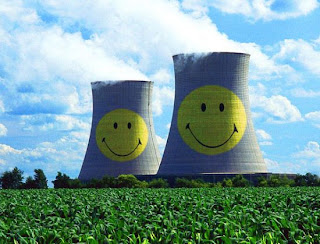
In the era of $4-a-gallon gas, nuclear energy is getting new scrutiny. Depending on which side you listen to, nuclear power is either the fresh, young, can-do face of the future or the tired, old, ticking time bomb of the past. Although the United States gets almost 20 percent of its energy from nuclear power plants, no new reactors have been built since the meltdown at Three Mile Island, near Harrisburg, Pennsylvania, in 1979.
After three decades of exile-during which Europe and Asia left U.S. nuclear technology in the coal dust-nuclear plants are applying for permits to build new reactors (nine permits are in the pipeline), pushing for a national nuclear-waste dump, and forging international partnerships that make the once unattainable goal of recycling spent nuclear fuel look inevitable. Given the spate of brownouts and blackouts, perhaps it’s not surprising that 63 percent of Americans favor nuclear energy as one way to provide electricity.
The antinuke chorus hasn’t given up; in fact, it’s been joined by several states worried about the relicensing of old nuclear plants. But with the population surging, fossil fuel prices soaring, and climate change scaring just about everyone, the prospect of clean, cheap nuclear energy is clouding those meltdown memories. To critics’ cries of nuclear proliferation and radiation leaks, proponents gently whisper, “Zero carbon footprint.” Oddly, the nuclear rebirth comes when planet-friendly energy sources like the sun and wind are making strides of their own, advances that could make them competitive with nuclear energy.
The Time Line
1945 – United States drops nuclear bombs on Hiroshima and Nagasaki, effectively ending World War II.
1950s — Desert tests in Nevada clear way for commercial nuclear industry. First U.S. reactor (Shippingport, in Pennsylvania) goes online, in 1957.
1979 – March 16 The China Syndrome (Jane Fonda, Michael Douglas), about lax safety at nuclear power plants, is released.
March 28 — Three Mile Island meltdown. No fatalities; studies show “negligible” health risk.
1983 – Silkwood (Cher, Meryl Streep), about nuclear skulduggery, is released.
1986 – Chernobyl disaster in the U.S.S.R. kills 31 and spews massive amounts of radioactive dust into the atmosphere. Ultimate death toll from cancer: 4,000 (estimate).
1987 – Congress authorizes national nuclear- waste repository at Yucca Mountain, Nevada, set to start in 1998.
1996 – Last reactor added to U.S. power grid (Watts Bar, in Tennessee).
1997 – Senator Harry Reid (D-NV) waylays plans to open Yucca Mountain in his state.
2005 – Energy Policy Act authorizes $18.5 billion in loan guarantees for clean energy plants, including nuclear ones.
2007 – First new application to build a nuclear reactor in 30 years.
2015 — Earliest date new nuclear reactor could be brought online.
2020 — Latest estimated opening of Yucca Mountain repository.


